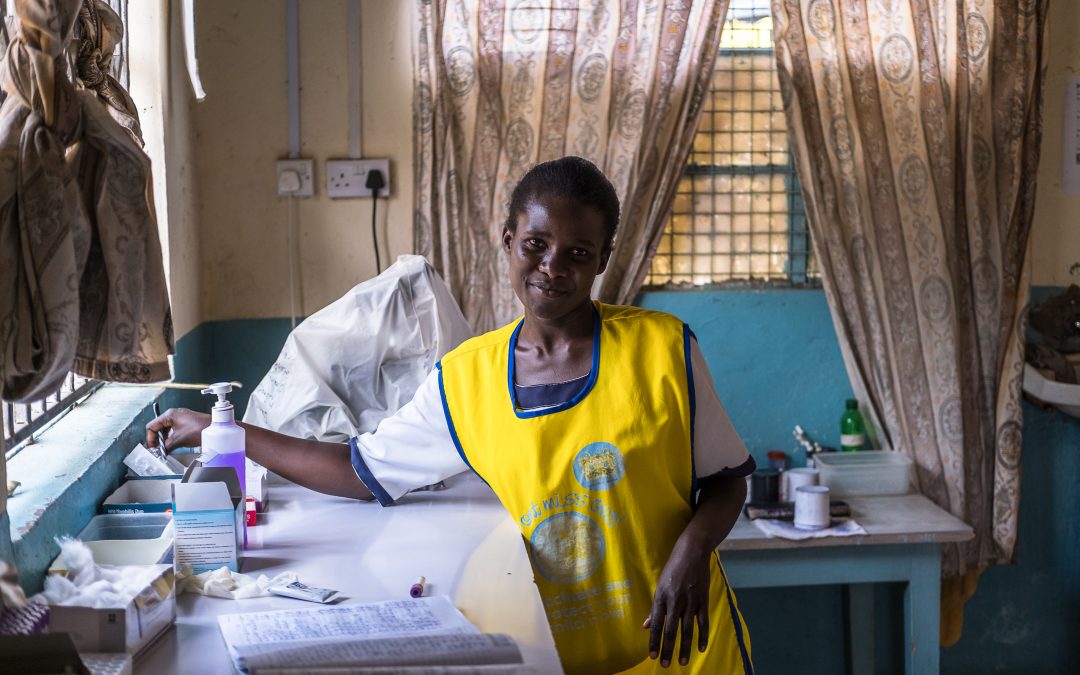On the 33rd World AIDS Day, marked yearly on December 1, there’s a growing sense of urgency as global targets to eliminate HIV, once within reach, start to slip away from grasp. While investments in HIV prevention and treatment, from research and innovation (R&I) to health systems strengthening, laid the foundation from which a rapid COVID-19 response was built, the pandemic is unraveling the tremendous progress made in recent years.
COVID-19 is not only directly causing high morbidity and mortality – with people living with HIV experiencing more severe outcomes and higher comorbidities – but also eroding health systems, creating barriers to care, and disrupting access to life-saving commodities. In its 2021 Results Report, the Global Fund revealed that HIV testing dropped by 22 percent, and people reached with HIV prevention programmes and services declined by 11 percent compared to 2019.
Despite the advancements that were made before the pandemic struck, they were uneven, and vulnerable groups were – and still are – being left behind. Inequality, in our societies and our response to the AIDS epidemic, has created one of the greatest health challenges of our time. Every week, around 5000 young women aged 15–24 years become infected with HIV. In sub-Saharan Africa, 6 in 7 new HIV infections among adolescents aged 15-19 years are among girls.
Ensuring young people have access to youth-friendly sexual and reproductive health and rights (SRHR) services, that integrate HIV prevention, treatment, and care will not only help to tackle the AIDS epidemic but also improve broader health, social and economic outcomes. Speaking at the World AIDS Day high-level event on November 18, Joyce Ouma, Influence and Engagement Advisor at Y+, Kenya shared:
“We need to do things differently, by ethically & meaningfully engaging young women in every process. We know what works well for us, but we’re constantly left behind.”
Heeding the words of young advocates such as Joyce, the EU should scale up its global funding to promote universal access to SRHR, engaging young people and youth groups to ensure their voices are heard and taken into account when planning and implementing programmes. Here, Eddie Kimani, a DSW Youth Champion shares how young people are leading the charge to end HIV & AIDS in his community in Kenya.
Also speaking at the World AIDS Day high-level event, Efraim Gomez, Chief of Staff at UNAIDS underlined the need for a scientific process that’s available to all. DSW’s recent study, Poverty-Related and Neglected Diseases (PRNDs) through a gender-lens, highlights not only the gender-differing prevalence, but also the disproportionate impact that PRNDs have on women and girls due to their different social, cultural, and economic realities. In its recommendations, summarised in this short video, the study outlines the changes that are needed to achieve more gender-sensitive PRND R&I, and ultimately the development of tools and treatments that are effective for those most at risk.
Prevention is key to ending the AIDS epidemic. Further adding to the urgent need for an HIV vaccine, which experts agree would help save millions of lives, is the alarming spread of HIV drug resistance, as reported in the WHO’s latest HIV Drug Resistance Report. Yet, there are still no effective therapeutic or preventative vaccines against HIV. While several effective COVID-19 vaccines were developed within a matter of months (with at least five COVID-19 vaccine candidates using platforms from HIV research), the world has been waiting over 37 years for a vaccine against HIV & AIDS! The COVID-19 outbreak has rapidly evolved the R&I landscape, and there is a risk that it will hinder, rather than catalyse, progress on PRND R&I.
It’s paramount that the opportunities offered by this new R&I landscape are harnessed to create and further strengthen funding and cooperation platforms to develop new technologies that could offer ways forward. Crucially, such support must extend to PRNDs, that are endemic in large parts of the world, but lack investment from the private sector, and not only funneled to feared emerging infectious diseases. The EU should mobilise additional investments in R&I for HIV & AIDS, including via Horizon Europe and the Global Health EDCTP3 (successor to the European Developing Countries Clinical Trials Partnership (EDCTP)).
Read more of our recommendations to the EU in this joint policy paper.
Photo: Brian Otieno/Storitellah.com/DSW

